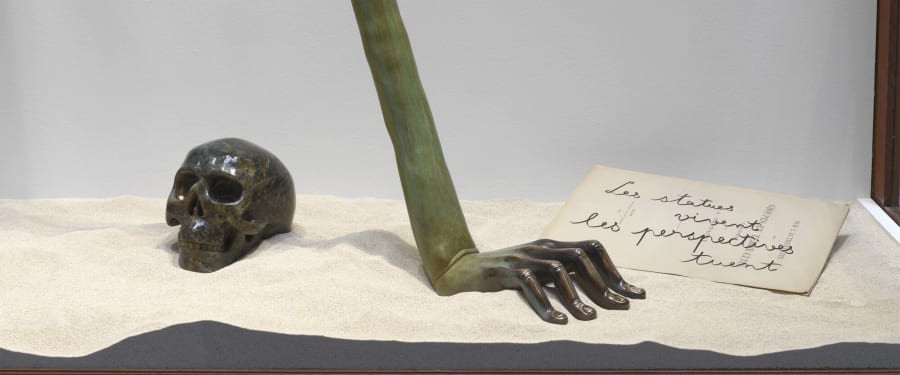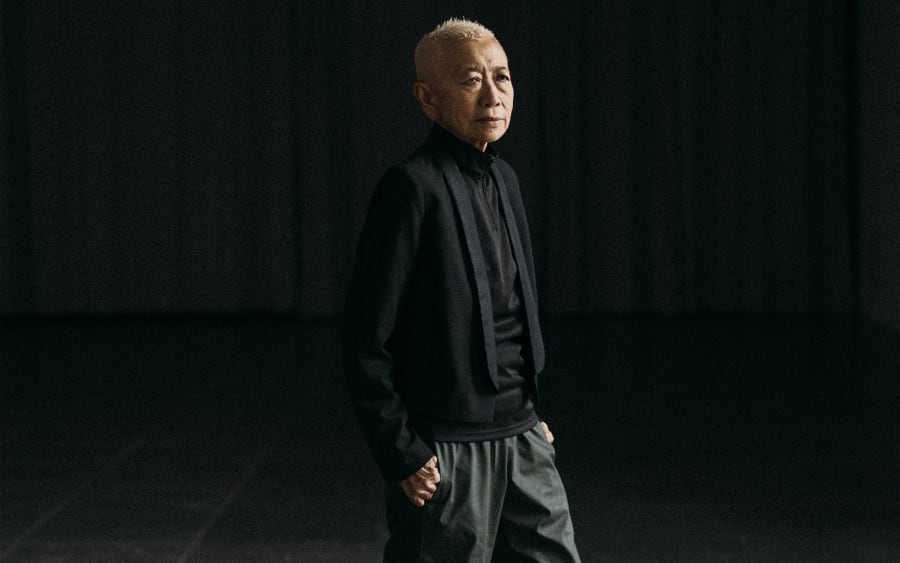Cao Fei’s practice is defined by its engagement with the rapidly shifting landscapes of technology, society, and identity. Working fluidly across film, digital platforms, virtual reality, and installation, Fei captures the complexities and contradictions of contemporary life in China and beyond. Her projects, such as the groundbreaking virtual metropolis RMB City (2007), explore our fraught relationship with technology, urbanization, and the metaverse.
Under the theme ‘Quarter Life Crisis’, the Verbier Art Summit – an annual gathering of artists, thinkers, and cultural leaders – is addressing both the profound uncertainty of our times and the transformative possibilities it presents. As one of the summit’s featured speakers, Cao will be reflecting on the dramatic shifts of the past quarter-century, a period that aligns strikingly with her own artistic evolution. In conversation, she shares insights into the pressures museums face, the tension between audience expectations and artistic integrity, and her latest explorations into smart agriculture and alternative futures.
Alicia Reuter: The theme of this year’s Verbier Art Summit is ‘Quarter Life Crisis’. It addresses uncertainty but also the emergence of new possibilities. How do you see your work connecting to this theme?
Cao Fei: Recently, a list of the 100 most significant artworks of the 21st century included my work RMB City. It made me reflect on this quarter-life period – on what has changed and what has remained important since the last century. The first time I participated in a contemporary art exhibition was in 2000, which means 25 years have passed – essentially a quarter-century, which aligns with the theme. In the past 25 years, so much has happened – technologically, politically, and socially. My work has always been deeply connected to these shifts and my own life.
Even though the pace of change has been incredibly fast since 2000, we are now experiencing even more dramatic shifts. Looking back, my work has always engaged with uncertainty and change – whether through virtual reality, the transformation of industrial spaces like the Pearl River Delta factories, or even the metaverse and the impact of the pandemic.
Given this rapid development, how have technological advances affected your work and how people experience it? Do you see this as a positive shift?
In 2007, I started working with [the multiplayer virtual platform] Second Life, long before most people understood what virtual reality was. Almost 20 years later, VR and digital platforms are everywhere.
The speed of technological change is astonishing. Even in the past year, AI has transformed how we interact with the digital world. In some ways, art used to be ahead of public understanding, but now audiences are evolving alongside technology.
But there’s a tension – are artists creating work for themselves or designing experiences to attract audiences? Museums often need visitor numbers to justify their funding, which means there is pressure to feature well-known artists or create highly interactive experiences.
Art shouldn’t just serve audiences, it should challenge and provoke. However, institutions and audiences are increasingly focusing on high-tech, immersive experiences to attract visitors. The question is, are we following trends or asking what medium is truly best for an artwork?
With that in mind, where do museums and art institutions need to innovate?
That depends on the institution. Some prioritize audience numbers, while others maintain curatorial independence. Public institutions, which rely on government funding, often have to justify their budgets through attendance figures. This creates challenges for artists, as museums tend to focus on big names or spectacle-driven experiences. There’s no easy solution.
Has this shift in audience expectations impacted the way you approach exhibitions?
Yes, I think so. When audiences come to an exhibition now, they often expect a participatory or immersive experience.
Another major shift is how institutions are structured. In some countries, museums are deeply connected to government policies, in others they maintain more independence. In recent years, my exhibitions in the US have become less frequent. In contrast, I recently exhibited in Brazil and Argentina, where audiences were interested in my perspective as an artist rather than where I come from. It’s interesting to observe these differences.
Do you feel a responsibility to address global tensions in your work?
Actually, artists can’t really resolve these issues. My recent work shown in Sydney [‘My City is Yours’, Art Gallery of NSW] was a deeply personal documentary about my older sister, who passed away two years ago during the pandemic. It wasn’t about global politics but audiences found it incredibly moving. I was surprised by how much people connected to such an intimate story.
Art doesn’t always have to tackle global crises. Sometimes personal experiences resonate even more deeply. There are endless topics an artist can explore.
One of your most recent projects explores smart agriculture. Can you talk about this?
This project started in the spring of 2023. I became aware of farms in the south of China and the northeast that use smart technology. They employ various automated tools, including drones, autonomous vehicles, and sensors that monitor water levels and fertilizer use.
I became very interested in this because China is a vast agricultural country with a huge population. In the past, many people worked the land, but now fewer are staying in villages, as most are moving to big cities. This is a major issue in China today, but it’s not unique to China. Many large countries, like those in South America and parts of Africa, are experiencing similar challenges. Agriculture is a fundamental concern for humanity, and I see this as a crucial topic of our century – who will be working in agriculture in the future?
I have dedicated three years to observing these farms and studying the impact of technology on agriculture.
Would the resulting project exist in the real world or only digitally?
It’s a large-scale, research-based project, so I hope to incorporate both. My practice often includes video, video installations, and virtual reality, so I would like to explore various media for this project. We are working with different formats, including interviews with scholars, discussions with a new generation of farmers, and conversations with technology developers creating the applications and systems behind this transformation.
A recurring theme in your work is the creation of alternative worlds. Do you think art has the power to propose alternative futures beyond crisis and anxiety?
This idea has been present since 2000 – dystopias, utopias, and alternative futures. But have things really changed? We keep imagining these concepts, and new generations continue to be fascinated by them.
However, the way audiences engage with art has shifted. Everyone is constantly scrolling on TikTok and Instagram. Do we even take a moment to reflect anymore? This raises questions about whether art still has the power to disrupt and provoke in the way it once did.
Can artists offer guidance for navigating global crises?
Yes, but more importantly, we must ask why these crises are happening. Twenty-five years ago, we were optimistic about the future, but after COVID everything changed. The world is more divided than ever.
The summit’s theme provides an opportunity for discussion. Art can bring people together, but it’s also crucial to understand the forces behind these crises. If we don’t address that, we’re just reacting instead of truly engaging with change.
Cao Fei is represented by Sprüth Magers (Berlin, London, Los Angeles, New York).
The Verbier Art Summit will take place on April 4 and 5, 2025, in person and online. More information and registration here.
Philip Tinari, director of the UCCA Center for Contemporary Art, China, partnered with this year’s summit to offer curatorial direction. The Verbier Art Summit was founded by Anneliek Sijbrandij in 2013.
Cao Fei will speak at the summit on Saturday, April 5, during the day program and at the closing dinner. During the dinner, she’ll be in conversation with Denis Pernet, curator at Audemars Piguet Contemporary, which commissioned her 2020 work Isle of Instability.
Alicia Reuter is a writer and Senior Editor at Art Basel, based in Switzerland.
Translation assistance by Xu Xiong.
Caption for header image: Portrait of Cao Fei by Jin Jiaji, 2021.
Published on April 2, 2025.


